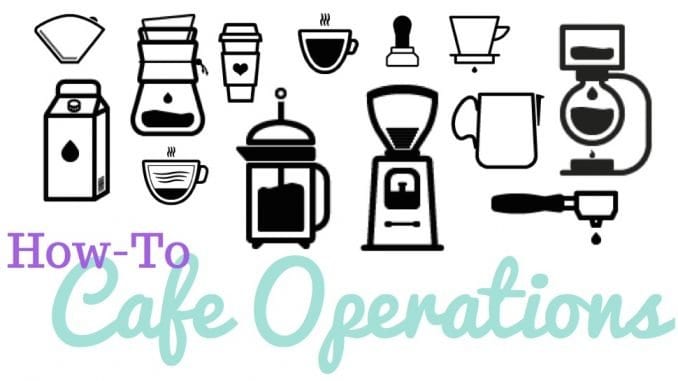
In the latest Barista Magazine blog series, our online editor Ashley Rodriguez will explain ˜how to’ identify and implement different tools and strategies to help your café run as efficiently as possible. You can learn more about the series and read part one here, and part two here.
There’s this joke in the Bay Area, where I live, that people love to wait in line. And to an extent, that’s true. Every time I even think about getting lunch in my neighborhood, I’m met with crazy lines, and to an extent most people are ok with it since, hey, they need to eat.
What people don’t always need is coffee from your particular café. Unless you live somewhere specialty coffee has somehow passed over, there are usually a number of options within walking distance of your café that customers can go to. And even if you’re one of those people who have a café in an underserved neighborhood, and you’re the only game in town, being unable to move a line makes customers irritable, short, and maybe even consider making coffee at home instead. In this installment of my how-to series, I’ll help you figure out ways to move your line and ensure customers leave quickly, happily, and with drinks in their hands.
- Acknowledge everyone.
Ok, so this technically isn’t a way to move a line, but it’s a way to address the line and ensure no one leaves. As a customer walks in, they should be acknowledged in some way. It doesn’t necessarily have to be verbal ”a nod or a look is enough for a customer to know that you see them and will take care of them. It’s much more difficult for someone to leave if they know you’ve seen them and have them in your head as opposed to feeling ignored. It also allows you to see if there are any regulars whom you know and know their drinks, so maybe you can queue it up for them, and make the eventual transaction between the customer and the person ringing them up faster.
- Ask people what they’ll be ordering.
Let’s say you have a line of five people. The first person in line orders three lattes. So you take their order, stop ringing people up, and start making the three lattes. The four people behind you might have complicated orders as well, but let’s say two of the four people want drip coffee. Because the line has stopped, these are the people most likely to turn around and leave. But if you can quickly take their orders, ring them up, and get them out, you can both ensure these folks won’t leave and also shorten your line ”there’s two fewer people standing around making it seem like the line is super long. And the first person in line who ordered the three lattes isn’t going to leave since the turnaround on a drip coffee is quick, but also because of the third tactic below.
- Ring people up first.
People aren’t going to leave if you take their money. Even if people are in a rush, a person is much more likely to stick around if there’s been some sort of monetary exchange. They’re not going to abandon the $4 they paid for a latte, but they will abandon a line that looks like it’s not moving, especially if they haven’t given you anything. Ringing people up first also helps you ascertain what orders need to be done in what order.
Going back to the five person line, if you can get all the drink orders in, you can create a queue of how to make those drinks and in what order. For example, if you only have one person on bar and there’s a few lattes in the queue, you might try to sneak an americano in since you can only physically steam so many drinks. Or you might couple up a cappuccino and a macchiato so you can steam those together.
- Give heads-up service
Alex Bernson of World Coffee Events wrote an awesome piece for Barista Hustle about heads-up service. If you haven’t read it, you should, but he talks about being aware of the entire café when you’re on the floor. Giving heads-up service also allows you to move a line faster ”if you’re working with your head up, you’re able to multitask better (if you’re steaming a drink, you should be able to talk to a customer at the same time or look at the line of drinks and see what’s next or, and this is only for the very ambidextrous, clean a milk pitcher and set up your next milk). Heads-up service also means knowing what drinks go to who and making sure the right person is picking up that latte when you have a queue of six on your bar.
Multitasking is hard, but it’s the single most honed skill I believe I have behind the bar. So next week I’ll share some of my tips for multitasking and doing the most in any given moment behind the bar.
Also, I want to hear from YOU! I’ve gotten some emails from readers, but if you have suggestions, questions, or want to pose a potential topic, please email me at ashley@baristamagazine.com!


Great post, I would love to visit a coffee shop like that!
ı love you coffe